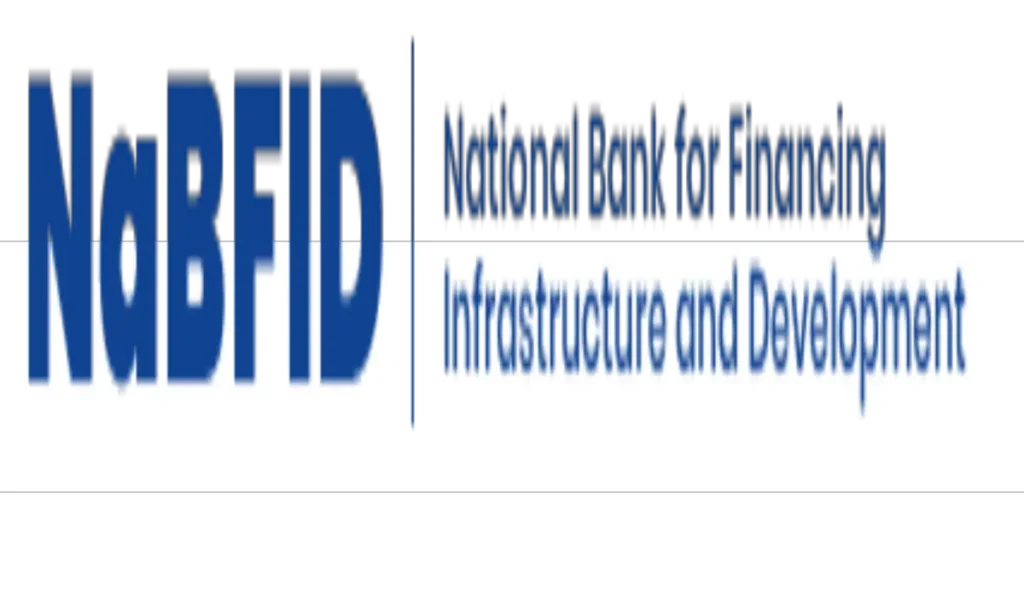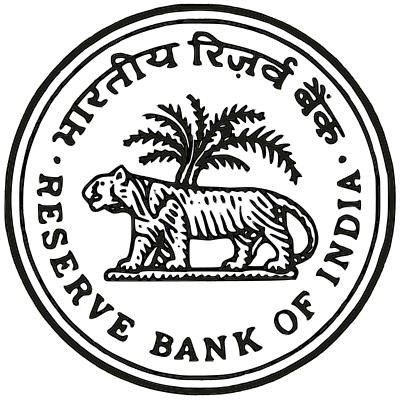Welcome to Daily Banking Digest, your premier source for the latest news and insights on March 02, 2024, focusing on banking, the economy, and finance. Our platform offers a comprehensive overview of the day’s most critical financial stories, market trends, and economic developments. Whether you’re a professional in the financial sector, an investor monitoring market movement, or someone interested in staying informed about the economic landscape, Daily Banking Digest provides reliable, up-to-date information.
Join our Telegram Channel for Daily PDF in your Inbox – Click Here
Table of Contents
India pitches re-examination of customs duties moratorium on e-commerce
India has urged the World Trade Organization (WTO) to reconsider the implications of the customs duties moratorium on e-commerce for developing and least developed countries. India opposes extending the moratorium beyond March 31st, as it estimates it causes significant tariff revenue losses for developing countries.
Key Points:
India’s Position: – India opposes extending the customs duties moratorium on e-commerce. – The moratorium causes tariff revenue losses of $10 billion annually for developing countries, with India losing approximately $500 million per year.
WTO Discussion: – The issue was discussed during the WTO’s 13th Ministerial Conference. – The moratorium cannot be extended without a consensus decision.
India’s Argument: – E-commerce holds economic development potential for developing countries. – WTO members should have all policy options available, including imposing customs duties on e-commerce trade, to promote digital industrialization.
Current Landscape: – A few firms based in developed countries dominate the global e-commerce landscape.
Need to create credit enhancement facility: Finance Minister to NaBFID
Finance Minister Nirmala Sitharaman has directed the National Bank for Financing Infrastructure and Development (NaBFID) to implement a partial credit enhancement facility to enhance bond markets and establish a data repository for the infrastructure sector. NaBFID has been advised to specialize in sectors and develop the ability to evaluate and underwrite large infrastructure projects.

Key Points:
Structured Partial Credit Enhancement Facility: – NaBFID will introduce a facility to improve bond ratings and provide access to cheaper financing.
Data Repository for Infrastructure Sector: – NaBFID will create a repository to provide comprehensive data on the infrastructure sector.
Sector Specialization: – NaBFID will develop expertise in specific infrastructure sectors.
Evaluation and Underwriting of Large Projects: – NaBFID will enhance its capabilities to assess and finance complex infrastructure projects.
Sanctions and Projects: – NaBFID has sanctioned over Rs 86,804 crore for infrastructure projects across various sub-sectors. – 50% of the sanctions have long tenures of 50 to 20 years.
Establishment and Role of NaBFID: – Established in April 2021, NaBFID supports the infrastructure sector by bridging financing gaps and providing innovative financing instruments.
India permitting onion exports to Bahrain, Mauritius upsetting major international markets, traders say
The Indian government’s decision to allow onion exports to Bahrain and Mauritius has sparked controversy within the exporting industry. Critics argue that the move favors smaller countries over larger importers, potentially damaging trade relationships. The decision to export to Bahrain, in particular, has raised concerns about potential re-exports to neighboring countries for profit maximization. The industry also expresses disappointment with countries that have not utilized their import quotas or requested onions through official channels.
Key Points:
Industry Criticism: – Government’s favoritism towards smaller countries could harm trade relationships with larger importers. – Exports should be opened in a measured way for all countries or not at all to avoid bias.
Bahrain Exports: – Bahrain’s minimal onion requirements raise questions about the rationale behind supporting its exports. – Some exporters plan to import to Bahrain and then transport onions to neighboring countries for profit.
Reciprocity in Trade: – Critics question supporting countries that import from other sources and have not supported India in times of surplus. – India should reconsider its export strategy to ensure fairness and reciprocity.
Indonesia’s Quota Refusal: – Indonesia has refused to open its quotas for Indian onions due to India’s previous export ban. – This could potentially halt exports to Indonesia until March 2025.
Underutilized Quotas: – Countries like Malaysia and UAE have not utilized their import quotas in the current year. – Industry players argue that it would be more ethical to support these larger importers.
Export Notification Delay: – Onion exporters and farmers in Maharashtra are waiting for the export notification. – The Onion Traders Association urges the government to avoid further delay, which could adversely affect farmers and exporters.
Manufacturing PMI surges to 56.9 in February
The manufacturing sector in India experienced a recovery in February, with the Purchasing Managers’ Index (PMI) rising to 56.9, indicating expansion. Production and sales increased at the fastest pace in months, while new export orders saw their strongest growth in 21 months. However, job creation remained stagnant.
Key Points:
Production and Sales: – Production rose at the fastest pace in five months, fueling the quickest increase in sales since September 2023.
New Export Orders: – New export orders expanded at the fastest rate in nearly two years, driven by demand from various countries.
Employment: – Manufacturing employment remained unchanged, with companies citing sufficient payroll numbers for current requirements.
Input Costs: – Input costs rose at the lowest rate in over three-and-a-half years, with inflation easing to its weakest level since August 2020.
Prices Charged: – Prices charged by manufacturers increased at a slower rate, with only 8% of companies raising fees due to higher freight, material, and wage costs.
GDP Growth: – Manufacturing played a significant role in India’s 8.4% GDP growth in the October-December quarter of FY24.
Outlook: – Manufacturers remain optimistic about future business conditions due to robust demand and improving profit margins.
India’s FY24 GDP growth could be within striking distance of 8%: SBI Ecowrap
India’s economy is projected to grow by 8% in FY24, with per capita GDP exceeding ₹2 lakh for the first time. The strong growth is attributed to robust performance in the third quarter and upward revisions in previous GDP estimates.

Key Points:
GDP Growth: – Q3 FY24 GDP growth surged to 8.4%, exceeding expectations. – FY24 GDP growth is estimated at 7.6%, with Q4 growth projected at 5.9%. – FY24 GDP growth could reach 8%, within striking distance of the initial estimate.
Per Capita GDP: – Per capita GDP at current prices has increased 2.9 times since FY12. – In FY24, per capita GDP crossed ₹2 lakh for the first time.
Savings and Investment: – Gross savings are expected to reach 32.3% in FY24, the highest since FY14. – Household savings have increased, particularly in physical assets. – Gross capital formation by the government and private sector has risen.
Gross Capital Formation: – Gross capital formation is projected to exceed 33.7% in FY24, the highest since FY19. – Public administration’s gross capital formation ratio reached a peak of 47.6% in FY23.
Outlook: – India could sustain 8% growth in FY25 if investment and savings remain stable. – Declining ICOR (capital-output ratio) will support continued growth.
RBI on ₹2000 withdrawal: Total value of banknotes in circulation declined to ₹8,470 crore by Feb-end
The Reserve Bank of India (RBI) has announced that 97.62% of the ₹2,000 banknotes in circulation have been returned as of February 29, 2024. The remaining notes continue to be legal tender. The RBI initiated the withdrawal of ₹2,000 banknotes in May 2023 due to their limited usage and the availability of adequate banknotes in other denominations.

Key Points:
Withdrawal of ₹2,000 Banknotes: – 97.62% of ₹2,000 banknotes returned as of February 29, 2024. – Remaining notes continue to be legal tender.
Value of ₹2,000 Banknotes in Circulation: – Declined from ₹3.56 lakh crore to ₹8,470 crore as of February 29, 2024.
Exchange and Deposit Facilities: – Exchange facility available at RBI Issue Offices since May 19, 2023. – RBI Issue Offices accepting ₹2,000 banknotes for deposit into bank accounts since October 09, 2023. – Public can send ₹2,000 banknotes through India Post for credit to bank accounts.
Reasons for Withdrawal: – Objective of introducing ₹2,000 banknotes met by availability of other denominations. – 89% of ₹2,000 banknotes issued before March 2017 and nearing end of lifespan. – Denomination not commonly used for transactions.
Clean Note Policy: – Withdrawal of ₹2,000 banknotes aligns with RBI’s “Clean Note Policy.”
Adani Group to invest ₹75,000 crore in Madhya Pradesh; to create employment for 15,000 people
The Adani Group plans to invest ₹75,000 crore in Madhya Pradesh across various sectors, including power generation, cement, and infrastructure. This investment is expected to create 15,000 direct and indirect jobs. The group has already invested ₹18,000 crore in the state, creating 11,000 jobs.

Key Points
- Investment Amount: ₹75,000 crore
- Sectors: Power generation, pump storage, cement, and other sectors
- Employment: 15,000 direct and indirect jobs
- Power Generation: ₹30,000 crore to increase capacity at Mahan Energen plant from 1,200 MW to 4,400 MW
- Pumped Storage: ₹28,000 crore to set up 3,410 MW capacity projects
- Road Sector: ₹5,000 crore to build Mahakaal Expressway
- Cement: ₹5,000 crore to set up clinker and cement grinding units
- Natural Resources: ₹4,000 crore to expand presence in food processing, logistics, and defence manufacturing
- Fuel Distribution: ₹2,100 crore to strengthen city gas distribution network
- Previous Investments: ₹18,000 crore in Madhya Pradesh, ₹42,700 crore in Tamil Nadu, and over ₹2 lakh crore in Gujarat
MoD signs 5 deals worth ₹39,125.39 cr for BrahMos, aero engines & air defence systems
The Ministry of Defence (MoD) has signed five major capital acquisition contracts worth ₹39,125.39 crore for the procurement of aero-engines, Close-in Weapon System (CIWS), High-Power Radar (HPR), and supersonic cruise BrahMos missiles. These contracts aim to strengthen indigenous capabilities, reduce foreign dependency, and boost employment in the defense sector.
Key Points
BrahMos Missiles – Contract worth ₹19,518.65 crore for procurement of BrahMos missiles from M/s BrahMos Aerospace Pvt Ltd (BAPL) – To meet combat outfit and training requirements of Indian Navy – Shipborne BrahMos missile system contract worth ₹988.07 crore – Supersonic cruise missile as primary weapon for strike operations
Aero-Engines – Contract worth ₹5,249.72 crore with Hindustan Aeronautics Ltd (HAL) for production of RD-33 aero engines for MiG-29 fighter aircraft – To sustain operational capability of MiG-29 fleet – Focus on indigenisation of critical components
Close-in Weapon System (CIWS) – Contract worth ₹7,668.82 crore with M/s Larsen & Toubro Ltd – Air Defence Guns, Tracking Radars, Search Radar, and Command & Control Shelter – To protect vital assets from low flying aerial threats – Employment generation of approximately 2,400 persons/year
High-Power Radar (HPR) – Contract worth ₹5,700.13 crore with M/s Larsen & Toubro Ltd – Static sensor for long range aerial surveillance – Augments IAF’s capabilities for monitoring and tracking adversaries – Employment generation of approximately 1,000 people/year
Universal Sompo General Insurance covers 2 lakh under PMJAY
Universal Sompo General Insurance has provided healthcare coverage to 2 lakh individuals and their families in Dadra & Nagar Haveli and Daman & Diu under the Ayushman Bharat Pradhan Mantri Jan Arogya Yojana (ABPMJAY). The scheme offers access to quality medical services, including 1,109 packages and 1,949 procedures across 27 specialties.
Key Points:
Ayushman Bharat Pradhan Mantri Jan Arogya Yojana (ABPMJAY) – Launched by the government in 2018. – Provides an annual insurance cover of up to ₹5 lakh per family for low-income individuals. – Addresses rising hospitalization costs for common ailments.
Universal Sompo General Insurance’s Role – Provided healthcare coverage to 2 lakh people in Dadra & Nagar Haveli and Daman & Diu under ABPMJAY. – Publicized the scheme through various mediums to boost enrolment. – Adopted an aggressive approach to enhance insurance penetration in areas with low coverage.
Benefits of ABPMJAY – Ensures access to quality medical services for those in need. – Alleviates the financial burden on millions, preventing debt due to medical bills. – Provides financial protection to over 50 crore people, constituting nearly 40% of India’s population.
Paytm board approves discontinuation of inter-company agreements with Paytm Payments Bank
Paytm and its associate entity, Paytm Payments Bank Limited (PPBL), have agreed to discontinue various inter-company agreements to strengthen PPBL’s independent operations. The move is part of Paytm’s efforts to reduce dependencies and support PPBL’s governance.
Key Points:
- Discontinuation of Inter-Company Agreements:
- Paytm and PPBL have mutually agreed to discontinue various inter-company agreements.
- Strengthening Independent Operations:
- The discontinuation of agreements aims to strengthen PPBL’s approach towards independent operations.
- Shareholder Agreement Simplification:
- PPBL’s shareholders have agreed to simplify the shareholder agreement to support the bank’s governance.
- Board Approval:
- The termination of agreements and amendment of the shareholder agreement were approved by Paytm’s Board of Directors on March 1, 2024.
- New Partnerships and Seamless Services:
- Paytm has announced plans to sign up new partnerships with other banks and take measures to provide seamless services for customers and merchants.
- Uninterrupted Operations:
- Paytm’s services, including the Paytm app, QR, Sandbox, and card machines, will continue to operate uninterrupted.
5,000 Farmer Producer Organizations onboarded on ONDC Portal, says Govt
The Indian government has onboarded nearly 5,000 Farmer Producer Organizations (FPOs) onto the Open Network for Digital Commerce (ONDC) platform, enabling them to sell their produce directly to consumers nationwide. This initiative aims to empower FPOs with digital marketing, online payment, and business-to-business and business-to-consumer transactions.
Key Points:
1. FPOs on ONDC: – Almost 5,000 out of 8,000 registered FPOs have been onboarded on the ONDC portal.
2. Government’s Objective: – The onboarding of FPOs on ONDC aligns with the government’s goal of providing farmers with better market access.
3. Benefits for FPOs: – Direct access to digital marketing, online payment, and business-to-business and business-to-consumer transactions.
4. Central Scheme for FPOs: – Financial assistance of up to Rs 18 lakh per FPO for three years. – Matching equity grants of up to Rs 2,000 per farmer member. – Credit guarantee facility of up to Rs 2 crore per FPO.
5. Credit Guarantee and Equity Grants: – Credit guarantee issued to 1,101 FPOs, covering over 10.2 lakh farmers. – Matching equity grants amounting to Rs 145.1 crore transferred to 3,187 FPOs.
Direct Benefit Transfer worth Rs 34 trn facilitated by PFMS: FM Sitharaman
Finance Minister Nirmala Sitharaman emphasized the significance of the Public Financial Management System (PFMS) in facilitating Direct Benefit Transfer (DBT) of Rs 34 lakh crore. She urged accounts officers to enhance the system’s efficiency and transparency. PFMS has revolutionized government financial administration, enabling real-time information, transparency, and accountability.
Key Points:
Public Financial Management System (PFMS) – Management information system used by Indian Civil Accounts Service officers to maintain government accounts. – Facilitates DBT to beneficiary accounts of various government schemes.
Direct Benefit Transfer (DBT) – Rs 34 lakh crore transferred through PFMS, eliminating inefficiencies and ensuring direct delivery of benefits to citizens. – 1,081 different schemes, including state government schemes, integrated into DBT.
Role of PFMS in Financial Administration – Facilitated real-time, reliable management information system. – Paved the way for transparent, accountable, and people-centric governance.
Initiatives by Central Pension Accounting Office (CPAO) – Pensioners Facilitation Cell, Web Responsive Pensioners Service, Pension Adalats, and Dirghayu pensioners’ mobile app. – Assisted over 12 lakh pensioners with easy access to pension information and grievance redressal.
Future Goals – Enhance efficiency, transparency, and accountability of financial administration through innovative and people-centric approaches. – Contribute to India’s journey towards becoming a ‘Viksit Bharat’ by 2047.
India to soon become exporter of semi-conductors: Vaishnaw
India aims to become self-sufficient in semiconductor production and a major exporter within the next few years. The government is implementing a long-term plan to establish a comprehensive semiconductor value chain, including design, assembly, testing, marking, packaging, and foundry capabilities. The recent approval of three semiconductor units in Gujarat and Assam, with an investment of ₹1.26 lakh crore, marks a significant step towards this goal.
Key Points:
1. India’s Semiconductor Ambitions: – India aims to meet its semiconductor demand domestically and become a major exporter.
2. Comprehensive Value Chain Development: – India is working to establish all three parts of the semiconductor value chain: design, ATMP, and fab.
3. Export Potential: – India plans to export 10-15 designed chips in the future.
4. Semiconductor Unit Approvals: – The Union Cabinet has approved three semiconductor units in Gujarat and Assam with an investment of ₹1.26 lakh crore.
5. Industry Sectors Served: – The proposed units will cater to the automobile, telecom, electrical, space, and defense industries.
6. Global Interest: – India is attracting global interest in semiconductor investment due to its favorable conditions.
7. Government Support: – The government has taken feedback from industry to support the development of a complete semiconductor ecosystem, including talent pool development.
UPI transactions dip slightly in Feb due to fewer days, technical disruptions.
UPI transactions experienced a slight decline in February 2024 compared to January, but remained higher than December 2023 levels. The dip is attributed to fewer days in February and technical issues at some banks. Despite the decline, UPI transactions continue to grow significantly year-over-year, driven by factors such as increased digital adoption and convenience.
Key Points
Transaction Volume and Value – UPI transactions in February 2024 were valued at ₹18.28 lakh crore, a 1% decrease from January’s peak. – The number of transactions fell by 0.8% to 1,210 crore. – Year-on-year, transaction value and volume increased by 48% and 61%, respectively.
Factors Responsible for Decline – Fewer days in February. – Technical breakdowns at multiple banks.
Growth Drivers – Shift away from cash transactions. – Increased convenience through value-added features. – Digital adoption by merchants. – Rising share of P2M transactions.
Future Projections – UPI transactions are expected to reach 20 billion per month by the end of FY25. – UPI is projected to dominate the retail digital payments landscape, accounting for 90% of total transaction volumes over the next five years.
FIU-Ind imposes ₹5.49 cr penalty on Paytm Payment Bank.
The Financial Intelligence Unit-India (FIU-IND) has imposed a penalty of ₹5.49 crore on Paytm Payments Bank Ltd for violating the Prevention of Money Laundering Act. The violations involved facilitating online gambling and routing proceeds of crime through the bank’s accounts.
Key Points:
Penalty Imposed: – FIU-IND imposed a penalty of ₹5.49 crore on Paytm Payments Bank Ltd.
Violations: – Violations of the Prevention of Money Laundering Act. – Facilitating online gambling and routing proceeds of crime.
Review and Notice: – FIU-IND initiated a review based on information from law enforcement agencies. – Compliance Show Cause Notice issued for violations of PML rules.
Findings and Penalty: – Charges against Paytm Payments Bank were substantiated. – Penalty imposed on March 1, 2024.
Paytm Payments Bank Response: – Penalty pertains to issues in a business segment discontinued two years ago. – Enhanced monitoring systems and reporting mechanisms implemented.
RBI Action: – RBI directed Paytm Payments Bank to stop accepting deposits on January 31, 2024. – Allegations of KYC violations.
FIU-India Role: – Central national agency responsible for combating money laundering and financing of terrorism. – Receives, processes, and analyzes suspect financial transactions.
Many countries want to start rupee trade with India: FM Nirmala Sitharaman
Finance Minister Nirmala Sitharaman highlighted India’s strong economic fundamentals and stable rupee, leading to increased interest in rupee trade from other countries. She emphasized India’s openness to private investments and support for sunrise sectors like AI, semiconductors, and manufacturing. Sitharaman also acknowledged the challenges of rupee trade but emphasized its benefits for countries facing dollar shortages.
Key Points:
1. Rupee Trade: – Indian rupee has been mostly stable against international currencies, except for the US dollar. – Countries are negotiating to start trade in rupees due to India’s strong fundamentals. – Rupee trade could have teething problems but is helping countries with dollar shortages.
2. Economic Stability: – India’s macroeconomic stability and predictable taxation policies have made it a serious player in the global economy. – India has received significant FDI and has strong reserves.
3. Global Recognition: – India’s solutions for reforming institutions are being considered in global fora. – India’s role in the evolving global landscape is becoming increasingly important.
4. Government Responsiveness: – India’s ability to meet challenges like COVID-19 is attributed to a responsive government that listens to experts and the public.
5. Investment Opportunities: – India has opened up every sector for investments. – Priority areas include space, deep sea, rare earths, AI, semiconductors, and manufacturing.
6. Adaptability: – The VUCA principle (volatility, uncertainties, complexities, and ambiguities) has become a default setup in contemporary times. – India is infusing adaptability into its systems to prepare for any eventuality.
What was agreed at WTO negotiations in Abu Dhabi?
WTO negotiators failed to reach consensus on major reforms during the Abu Dhabi conference, with national interests prevailing over collective responsibility. While some progress was made on e-commerce and dispute settlement, key issues such as agriculture and fisheries remain unresolved.
Key Points:
E-Commerce: – Moratorium on tariffs on digital goods extended until the next ministerial conference. – India and South Africa opposed the extension. – Draft program agreed for future work.
Dispute Settlement: – Commitment to continue negotiations in 2024 to resolve the crisis in the dispute settlement system. – India expressed disappointment over lack of progress. – U.S. Trade Representative Katherine Tai expressed optimism about negotiations. – Obstacles remain, and progress is unlikely during a U.S. presidential election year.
Agriculture: – No agreement reached on public stockholding. – India sought a permanent solution, but alternative proposals were rejected.
Fisheries: – No deal reached on the second part of the international agreement to curb government subsidies. – Environmentalists emphasized the importance of a deal for ocean conservation. – Draft agreement issued with areas of non-agreement, including phase-in periods for developing countries.
WTO meet enters extra time; no pact yet on farm, fishing
The 13th ministerial conference of the World Trade Organization (WTO) remains deadlocked on the fifth day due to disagreements on agriculture issues, particularly those concerning India. Despite ongoing negotiations, progress has been limited. Key members, including India, the US, and the EU, are holding talks to resolve differences on agriculture, fisheries subsidies, WTO reforms, and the duty moratorium on e-commerce trade.
Key Points:
- Agriculture Issues: Rich nations remain divided on agriculture issues, leading to a deadlock in negotiations.
- E-commerce Moratorium: Brazil supports India and South Africa’s call to end the moratorium on imposing taxes on e-commerce transmissions.
- Investment Facilitation Agreement: South Africa withdraws its opposition to the China-led proposed Investment Facilitation Agreement.
- Industrial Subsidies: The EU pushes for disciplines on industrial subsidies, while developing nations like South Africa oppose it.
- Green Room Meetings: Around nine WTO members, including India, the US, and China, hold green room meetings to iron out differences.
- US Trade Representative Departs: US Trade Representative Katherine Tai leaves for the US.
- WTO Chief’s Efforts: WTO chief Ngozi Okonjo-Iweala is actively trying to facilitate an outcome.
- Possible Outcomes: An outcome document may not be possible, but a chair statement or ministers report is likely.
- India’s Demands: India calls for an end to subsidies for distant water fishing and the moratorium on e-commerce trade duties.
WTO meeting: India objects to agri timelines in draft text for permanent solution
India has objected to proposed timelines for a permanent solution to public stockholding in agriculture in a draft text circulated at the WTO’s 13th Ministerial Conference. India insists that the issue be addressed first, while other nations have differing priorities. Negotiations remain deadlocked on the fifth day of the conference.
Key Points:
India’s Objection: – India refuses to accept timelines for a permanent solution to public stockholding.
Draft Text Options: – Adopt a permanent solution at MC13. – Intensify negotiations at the Committee of Agriculture with timelines for defining elements and implementing reforms.
India’s Position: – Timelines should not apply to public stockholding. – Public stockholding should be addressed in the outcome document.
Negotiation Deadlock: – Rich nations remain divided on agriculture issues, including public stockholding, market access, and subsidies. – India prioritizes public stockholding, while the US seeks market access and the EU wants subsidy cuts.
Other Issues: – China proposes a work program on food security and agriculture. – Cairns Group opposes public stockholding and export restrictions. – Food importing countries seek predictability in farm policies.
Govt offers debt restructuring and one-time settlement to sugar mills for loans taken under SDF
The Indian government has released revised guidelines for loans taken under the Sugar Development Fund (SDF) to assist sugar mills. These guidelines provide options for debt restructuring and one-time settlement, aiming to alleviate the financial burden on mills.
Key Points:
1. Outstanding Loans: – As of January 31, sugar mills have outstanding loans of Rs 3,730.15 crore under SDF schemes, including Rs 939.87 crore in penal interest.
2. Debt Restructuring: – Mills can restructure SDF loans by capitalizing balance interest and rescheduling the principal. – Penal interest will be waived off under restructuring. – A 24-month moratorium period is offered for payment of principal and interest, with normal interest accruing during this period. – The balance loan amount will be divided into equal monthly installments for five years after the moratorium.
3. One-Time Settlement: – Mills can clear their dues within six months to have penal interest waived off. – Only mills with continuous cash losses for the last three years or negative net worth are eligible. – Mills should not have stopped crushing or remained closed for more than two sugar seasons.
4. Impact on Cooperative Sugar Mills: – The revised guidelines will provide relief to 33 cooperative sugar mills with outstanding loan amounts of Rs 1,378 crore. – Maharashtra has the highest outstanding loan amount among states, followed by Uttar Pradesh and Tamil Nadu.
NEFT records 4.1 cr transactions on Feb 29, highest single-day volume
The National Electronic Funds Transfer (NEFT) system in India witnessed its highest single-day transaction volume on February 29, 2023, processing over 4.10 crore transactions. This surge in NEFT usage reflects the growing adoption of digital payment systems in the country.
Key Points:
- Highest Single-Day NEFT Transactions: NEFT processed 4,10,61,337 transactions on February 29, 2023.
- Growth in NEFT and RTGS: Over the past decade, NEFT and RTGS systems have experienced significant growth in both volume and value.
- 24/7 NEFT and RTGS: NEFT and RTGS systems now operate 24/7, 365 days a year.
- Purpose of NEFT and RTGS: NEFT is used for retail payments, while RTGS is used for wholesale payments.
- Highest Single-Day RTGS Transactions: The RTGS system recorded its highest single-day volume of 16.25 lakh transactions on March 31, 2023.
RBI may undertake comprehensive review of architecture of payment banks
The Reserve Bank of India (RBI) is considering a comprehensive review of payment banks (PBs) to assess their governance, business model viability, and potential changes. This review will also impact PBs seeking to convert into small finance banks (SFBs). Despite becoming profitable for the first time in FY23, PBs continue to face challenges and have requested an increase in the end-of-day account balance limit and permission to lend to the microfinance sector. The review will also address the regulatory treatment of corporate houses entering the banking sector through PB conversions.
Key Points:
1. RBI Review of Payment Banks: – Comprehensive review of PB architecture, including governance, business model, and regulatory framework. – Impact on PBs seeking to convert into SFBs.
2. PB Profitability: – PBs turned profitable in FY23 for the first time. – Growth in interest income exceeded interest expenses. – Net interest margins increased to 3.7% from 2.3% in FY22.
3. PB Requests: – Increase in end-of-day account balance limit from Rs 2 lakh. – Permission to lend to the microfinance sector.
4. PB Licensing and Corporate Entry: – PB licensing preceded SFB licensing. – Corporates are not allowed into SFBs as fresh applicants. – Airtel Payments Bank and Jio Payments Bank may test RBI’s stance on corporate entry into banking through PB conversions.
5. Global Context of Payment Banks: – India’s PB model is unique. – Brazil and South Africa have similar payment institutions. – Kenya’s M-Pesa is a successful “nested” payments bank.
6. Viability Concerns: – Viability of PB business model has been questioned. – Emergence of UPI has changed the payment landscape.












1 thought on “FIU-Ind imposes ₹5.49 cr penalty on Paytm Payment Bank- Daily Banking Digest”